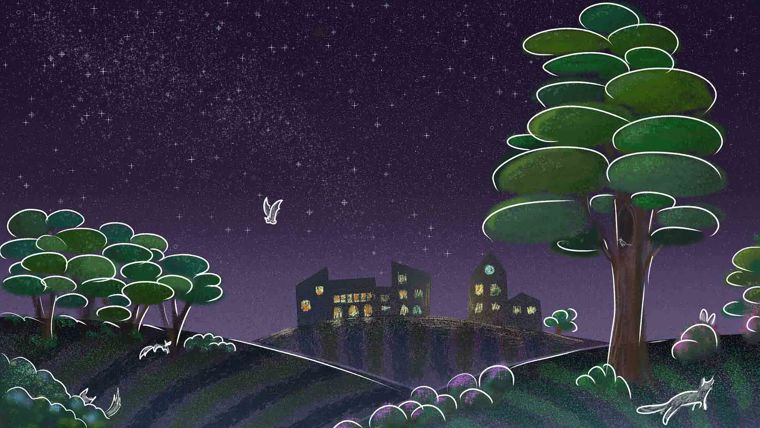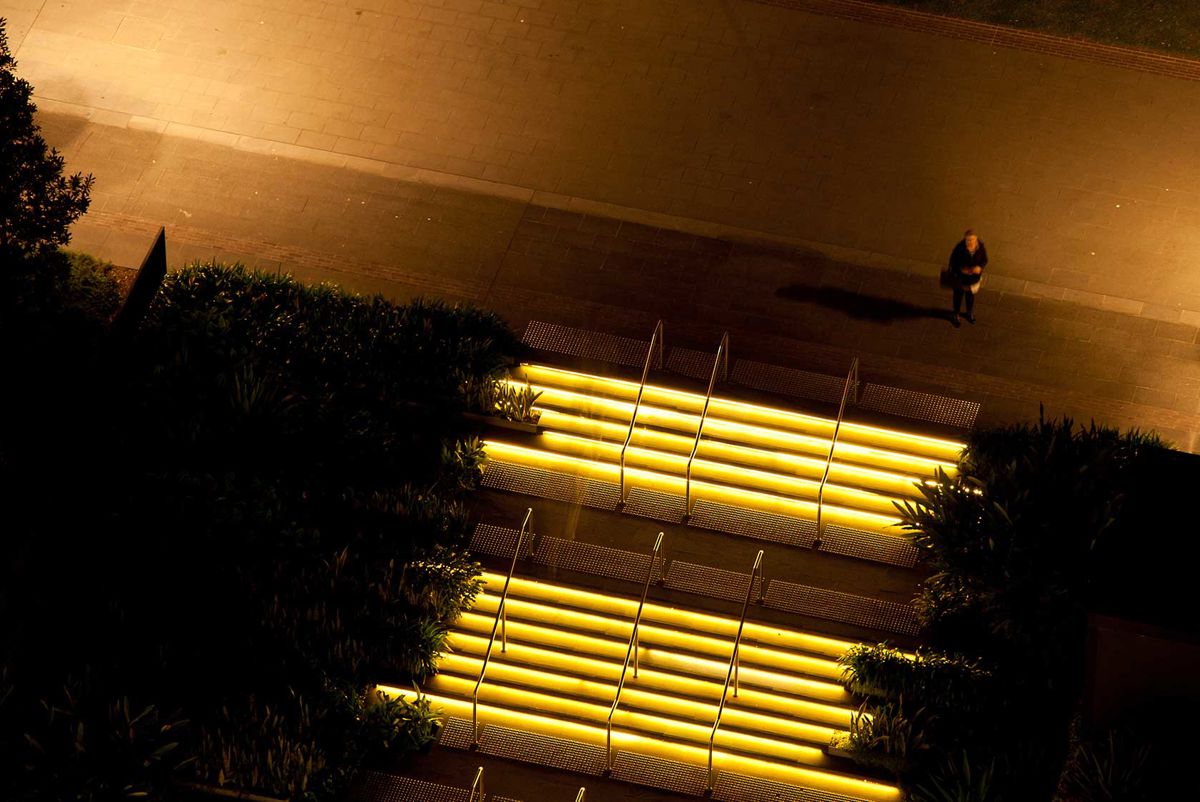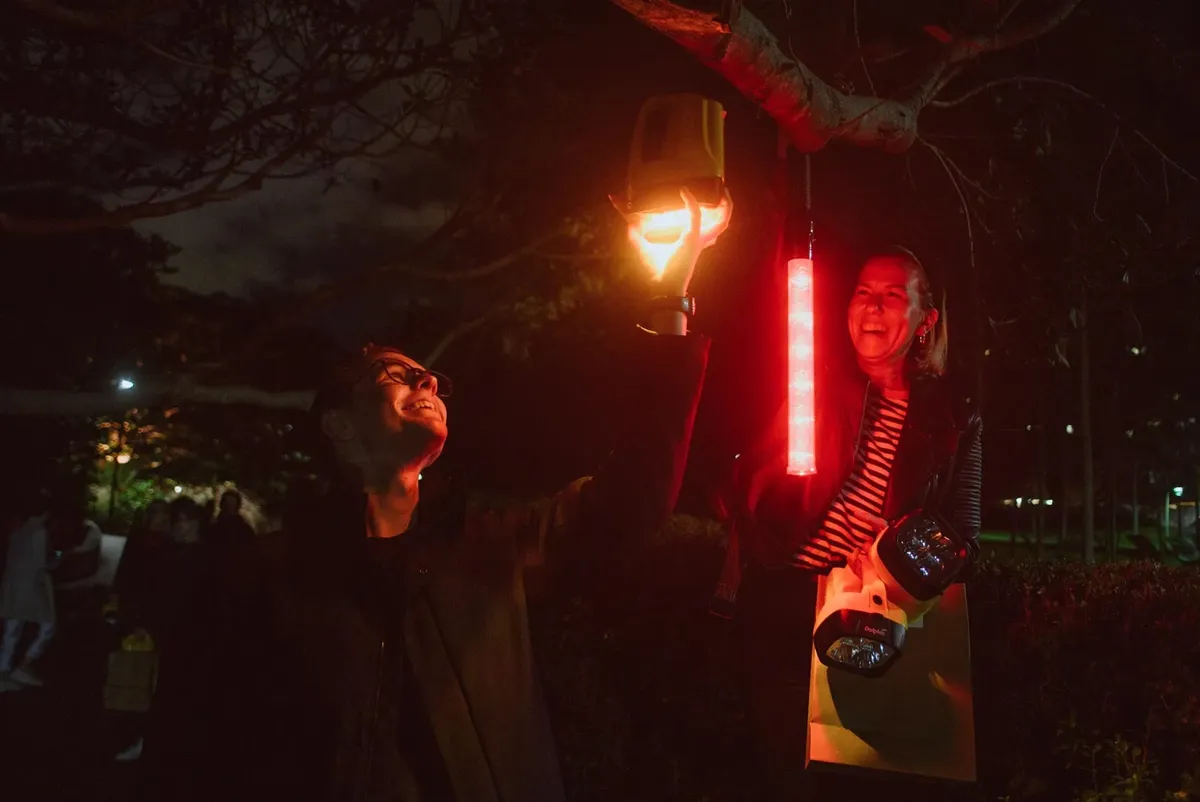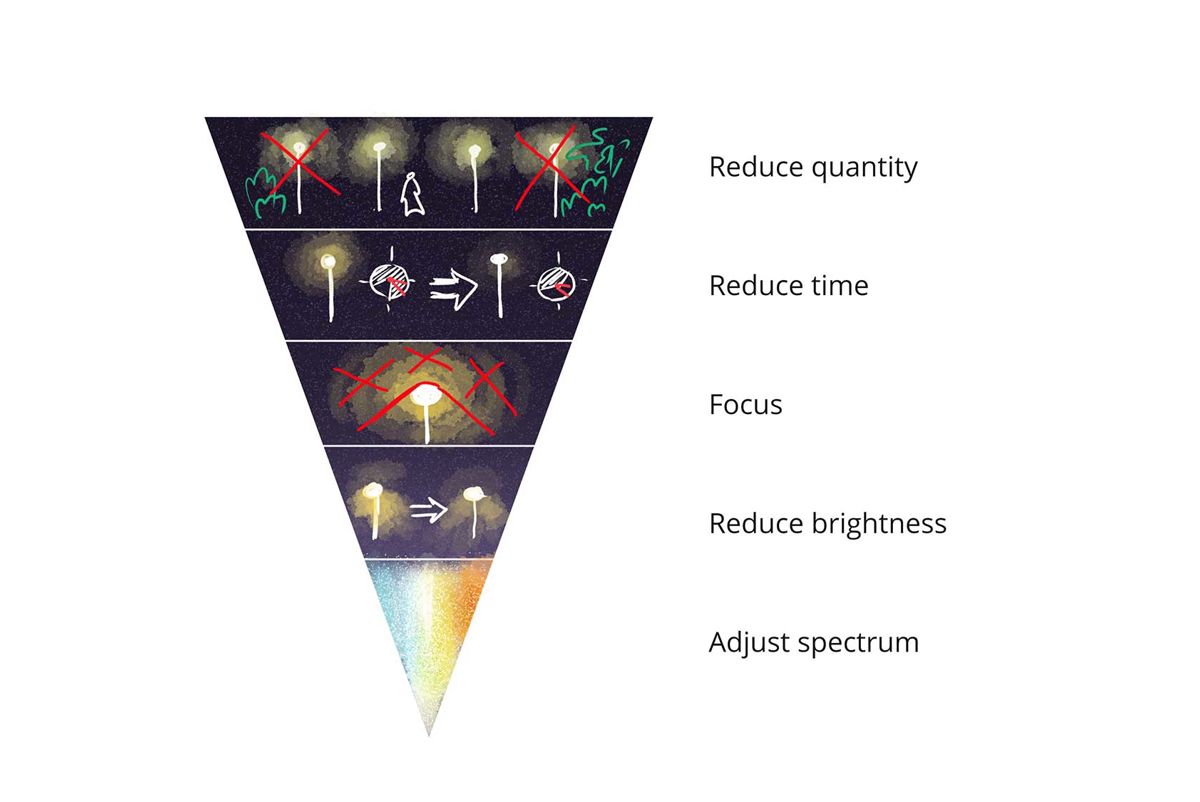Relighting and rewilding our environment
Over the last two decades, there has been an increased level of concern about the impacts of lighting polution on our natural environment. With more initiatives to 're-wild' areas to protect biodiversity, lighting is now being recognised as an important factor to ensure these initiatives are a success.


Inessa Demidova
Lighting Designer
Last updated: February 2022
In the global sweep of urbanisation over the last 150 years, the presence of reliable public lighting has been a brilliantly visible sign of human society’s mastery of its environment. Not for nothing do commentators comparing the relative developmental fortunes of North and South Korea usually display aerial photos, a blaze of light in the South, continuous darkness in the North.
However, in the last twenty years, concern has been rising about the secondary and negative effects of our ability to relentlessly light the environment we share. We have begun to grasp that ‘light pollution’ has wider and more significant impacts on the natural world and is beginning to undermine our other goals. With understandable calls to protect precious biodiversity and even initiatives to ‘re-wild’ areas where human development has upset the balance between humans and nature, lighting is beginning to be recognised as a key factor deserving a reappraisal.
Brightness grows
Light pollution is reckoned to be growing at about 2% per year across the developing world. Increasing light pollution produces change in ways analogous to climate change, causing fundamental damage to flora, fauna and ecosystems.
Under increased levels of artificial light, night-time pollinators are 62% less likely to visit flowers (moths specifically), marine animals such as sea turtles struggle to breed and birds’ migratory patterns are disrupted. Artificial lighting’s pernicious effects on animal development and population levels brings the issue into conflict with emerging regulatory requirements that new developments must protect and promote biodiversity.
Light is no longer an issue that can be ignored and from France and Germany, to Australia and New Zealand, environmental regulators are starting to respond, gaining insights from activists and scientists, and drawing conclusions.
Take the French government’s 2018 decree on light pollution, which looks to regulate “excessive disturbance to persons, fauna, flora or ecosystems, causing energy wastage or preventing observation of the night sky.” The decree sets an impressively comprehensive definition of acceptable levels of artificial lighting across the urban and natural environment. Perhaps more importantly, it’s a clear indication of how regulation can be applied in a thoughtful and effective manner, setting standards for other nations to emulate.
As ever, the United Nations Sustainable Development Goals provide further stimulus to action on the issue. Light pollution falls squarely under the SDGs 14 and 15 with their focus on the protection of ecosystems on land and in the water.
A solvable problem
Unlike climate change issues, light pollution is relatively easy to minimise, as if by ‘a flick of a switch’. The causes are all within our control and once we recognise the problem, it’s possible to take a more measured and thoughtful approach to the artificial lighting of our world.
We can find a workable way of championing ecology and protecting biodiversity while providing comfortable urban lighting and feeling of safety at night. Furthermore, efforts on this issue will also reduce energy use, lower the harmful effects of light pollution on human health and promote our connection with the natural world.
So, how do we achieve this new balance? The short answer is that we need to take a more nuanced and inclusive initial approach to the way lighting is designed into development schemes, where a range of natural and environmental considerations shape the specification from the very start.




Rule one: let the night happen
One of the most direct impacts on nature is that continuous urban lighting effectively undermines the differentiation between day and night. The design fix for this is to build greater control and flexibility into the way urban lighting is operated, seen in the Kemeralti Masterplan. Clearly we need to balance the need for public safety with the existing overuse of lighting according to a fixed schedule. We could easily decide to become more forensic about how lighting is implemented. In more social areas of a town or city, you might opt to make sure Friday night lighting operates later, but not in the rest of the week.
The ultimate goal is to change cultural perceptions of lighting, encouraging a more critical approach in the general population. Actually, we can see how this can take hold. A 2021 study showed that 95% of Parisians polled felt that the city centre was over-lit. A French parkour group has even made turning off urban lighting part of its nightly activities. Perhaps a hunger for change is building.
Rule two: carry out a truly holistic assessment
Initial assessments should align architecture, lighting design with biodiversity analysis, such as the road lighting at Centrale As. Every location’s ecology is particular and different and those needs must be understood. The central change in thinking here is that we don’t need to see urban development and championing biodiversity as being essentially in conflict. The growing interest in ‘rewilding’ initiatives have set in motion a reassessment of the impacts of urbanisation on the natural world. Commitments to biodiversity net gain will mean encouraging nature to flourish in new places too, something we won’t achieve if artificial light is allowed to disrupt natural rhythms for plants and animals. A more enlightened approach to lighting fits within this same narrative of finding new harmony between human development efforts and protecting the natural world.
Making it happen
As ever, the challenge is to somehow change norms from within our industry and establish a new definition of what good urban lighting is – it means establishing a new ethos, one that’s shared by the public, commercial operators, suppliers and regulators alike. Incentives do exist, and we believe that the approach offers reputational rewards to organisations that proudly embrace it, helping to build an organisation’s ethical bottom line.
As we discussed at the start, regulators are beginning to have lighting in their sights. Here in the UK the government has recently debated updates to the Environmental Bill, looking at potential light pollution reduction targets. An All Party Parliamentary Group has formed to investigate the issue further. With biodiversity net gain increasingly a legal requirement on major schemes, it feels inevitable that light pollution will soon be in the spotlight.
Get in touch with our team
